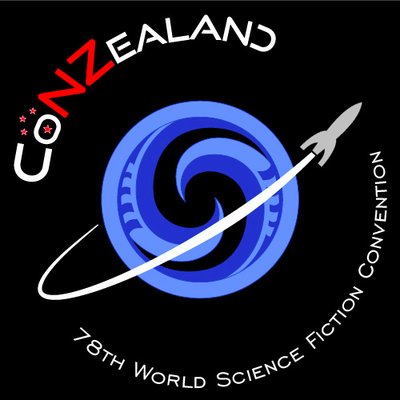
James Brown’s design for the 1945 Retro Hugo base, and John Flower’s design for the 2020 Hugo Award base were shown to the public for the first time during CoNZealand’s virtual Opening Ceremonies on July 28.
Retro Hugos
James Brown described for the audience the thinking behind his design.
Now in keeping with the theme of exploration, my design is based on the prow of a waka, or traditional canoe of the M?ori people, the amazingly skilled navigators and explorers who were the first to discover and settle Aotearoa New Zealand. The motifs on the side are inspired by whakairo, the traditional M?ori art of wood carving. In the spirit of the Retro Hugos, I think it’s ideal that the award itself can give a sense of being an artifact from the year that it honours. Design-wise, the mid-1940s were a really interesting time in between the sleek modernism of art deco and the futurism of the 1950s. A lot of creative use was being made of new polymers and plastics. So I chose to cast the base in a polyurethane resin with a marbled effect, reminiscent of art deco bakelite radios, and I’ve given the lettering an imitation mother of pearl effect with an iridescent, translucent resin. The design of the lettering was inspired by the typography of golden age sci-fi magazine covers.
This was an immensely fun project for me to work on. I got to use all sorts of techniques which were new to me, like computer aided design and 3D printing, and my background as a sculptor is in the miniature war-gaming industry so this is by far the largest thing I’ve ever sculpted and cast. It’s been quite a long project, quite a long process, especially with the unexpected demands of the COVID-19 lockdown, but fortunately my wife has been very understanding and hasn’t minded me turning our relatively small apartment into my workshop.
2020 Hugos
John Flower, from Palmerston North, New Zealand, says he created a base out of black glass, with a bunch of gold hands designed onto it:
They were used by early explorers, the M?ori who came to New Zealand, to navigate through the Pacific. The idea is that, depending on how many fingers you hold up, you can measure the angle between a set of stars and the horizon, and work out where you are. For example, if you have the Southern Cross—which is made up of four stars—you can measure the distance between the top star and the bottom star, and if you rotate your hand like that so it’s, say, three fingers distance down to the horizon, then you know that you have due South when you’re in the Southern Hemisphere.
So each of these gold hands is a different number of degrees, and the constellations within there are known in New Zealand as Matariki. In other places they’re known as the Pleiades, or Subaru in Japan. They’re a group of stars that show up in New Zealand somewhere between May and June. In New Zealand, they’re recognised as the beginning of the New Year. We did all the design work using open source software, like Blender and Inkscape, which are free to use. So here we have a sheet of P?ua. P?ua is a mollusc found off the shores of New Zealand. They’ve taken the shell of it and flattened it out. We have used a laser to cut a spiral design in it. The spiral design combines the Milky Way with the pattern of endemic ferns of New Zealand. So we’ve cut it out from here, and if we move the sheet we can see what we’ve created. So that’s cut out from the middle, and the idea is that on top of this P?ua we will seat a timber design on top like so, and the rocket will go in the middle like that.
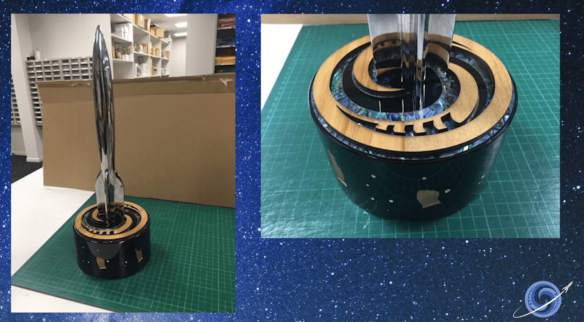
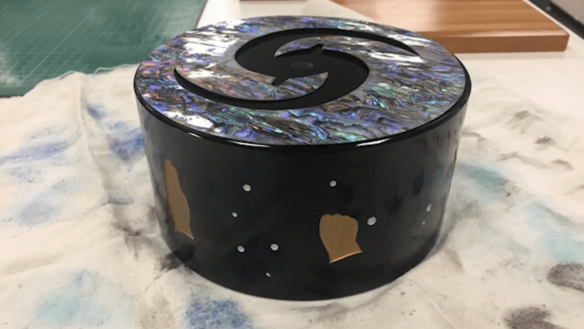
Discover more from File 770
Subscribe to get the latest posts sent to your email.

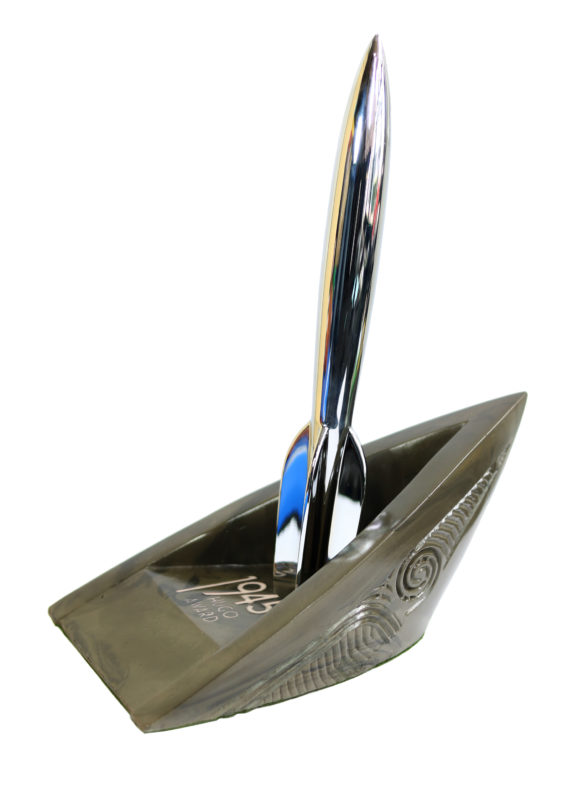

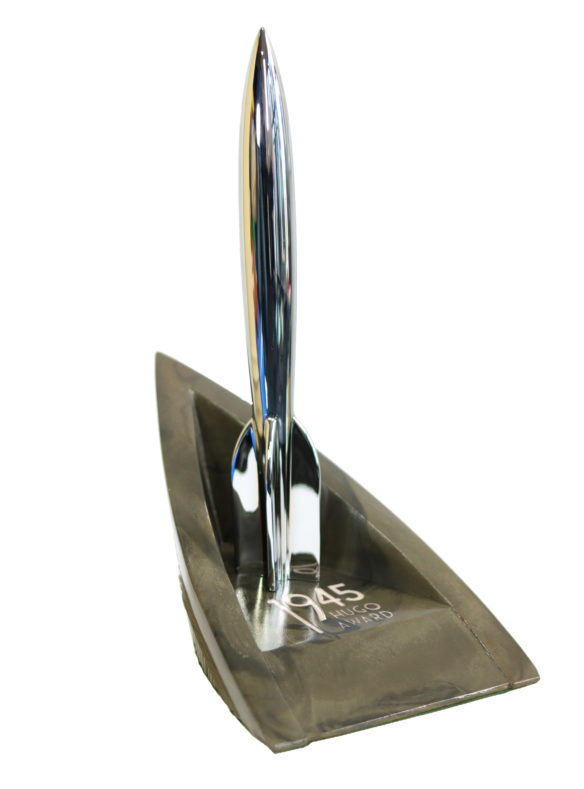
Both are beautiful, John Flower’s base with the paua (New Zealand abalone) shell inlay took my breath away.
Lovely!
Oh, those are gorgeous.
Bonnie McDaniel: Oh, those are gorgeous.
I know, I’m already making schemes about who I have to bribe or kill to get one of those abalone (paua) Hugos. 😀
Gorgeous. Now I really want to win one of those.
But sorry, JJ, if I should win, you’re not getting mine. 😉
Cora Buhlert: But sorry, JJ, if I should win, you’re not getting mine.
I know where you live! I can show up and beg to be allowed to caress it! 😀 [1]
[1] This assumes that any of us are ever allowed out, ever again. <sigh>
Oh, you’re always welcome to show up, Hugo or not, if they ever let us travel again.
Oh my
Lovely and so intertwined with the culture of New Zealand.
Beautiful and great connections to NZ. 😀
I love the way the canoe and the rocket fit together in the retro base — the masses and shapes balance, as if linking the two wildly different technologies.
The contemporary base seems to exist in 2 versions, one topped entirely with shell and the other a mix of shell and wood; which one is the final, or is it convertible?
The mix of shell and wood.
Both of those are beautiful. Standing ovation. 🙂
Pingback: Those 2020 Hugo Awards – Crane Hana Books
Both of these bases are wonderful, but I think the one with the paua shell is probably one of the most beautiful bases for a Hugo that I have ever seen.